Located in the northeastern part of Bogotá, Chapinero offers a mix of cultural and modern attractions. This bustling district is renowned for its vibrant nightlife, trendsetting fashion boutiques, and eclectic culinary scene. Whether you’re a food lover, a shopaholic, or a nightlife enthusiast, Chapinero (and its Zona T) has exciting options to explore.
What (and Where) is Chapinero?
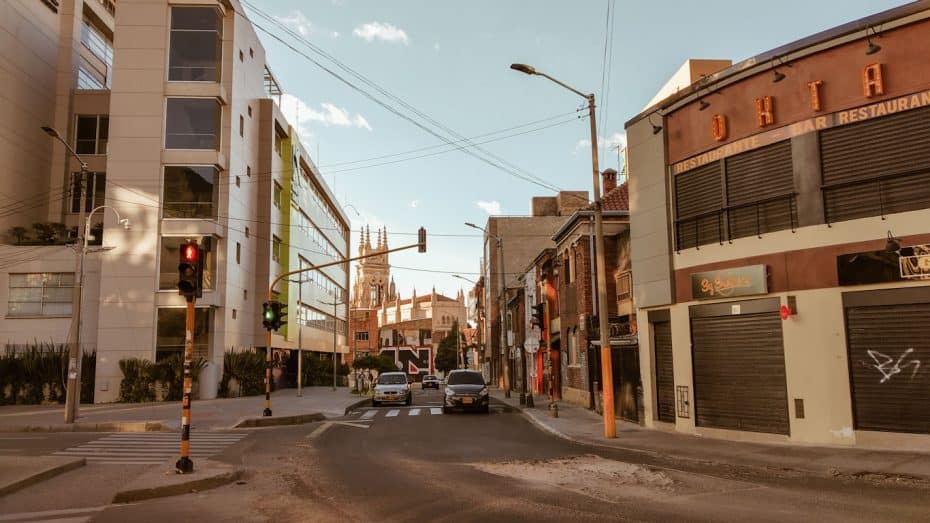
Chapinero is one of the Bogotá’s most vibrant and eclectic neighborhoods. Located in the northeastern part of the city, Chapinero is officially called Comuna 2 and is one of the 20 localities that make up Colombia’s Distrito Capital.
The locality is bounded by Calle 39 to the south and Calle 100 to the north. Chapinero is home to some 150,000 inhabitants and comprises a mix of commercial and middle—and upper-class residential areas.
In case you missed it…
Chapinero is Bogota’s Coolest Neighborhood for Nightlife and Food
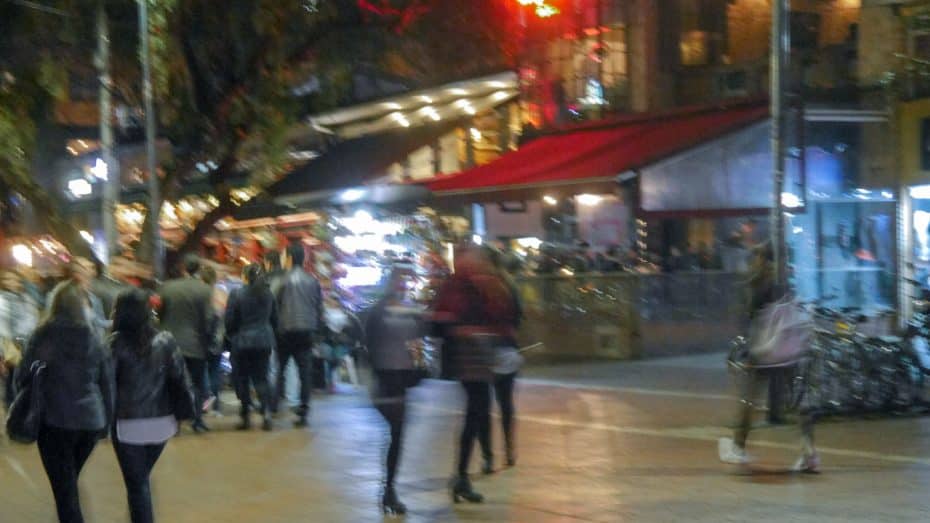
Notably, Chapinero is famously home to Bogotá’s famous zonas T and G.
Zona T, this pedestrian-only area, is formed by the intersection of Calle 82 and Carrera 12, shaping the iconic “T.” Popularly referred to as Zona Rosa (Pink Area), it’s a hub of activity, offering numerous dining, shopping, and entertainment options for all. Meanwhile, Zona G (between Calles 67 and 72 and Carreras 3 to 7) is known for its upscale restaurants.
In case you missed it…
Chapinero is Bogotá’s LGBTQ+ Quarter
Known affectionately as Chapigay, Chapinero is well-known for being the city’s LGBTQ+ Quarter. The gay area primarily stretches along Carrera 7 between Calles 53 and 63. This lively neighborhood offers an energetic atmosphere, with Teatrón being one of the most popular nightclubs catering to the LGBTQ+ community. Other, more upscale, gay-friendly places can also be found nearby in Zona Rosa.
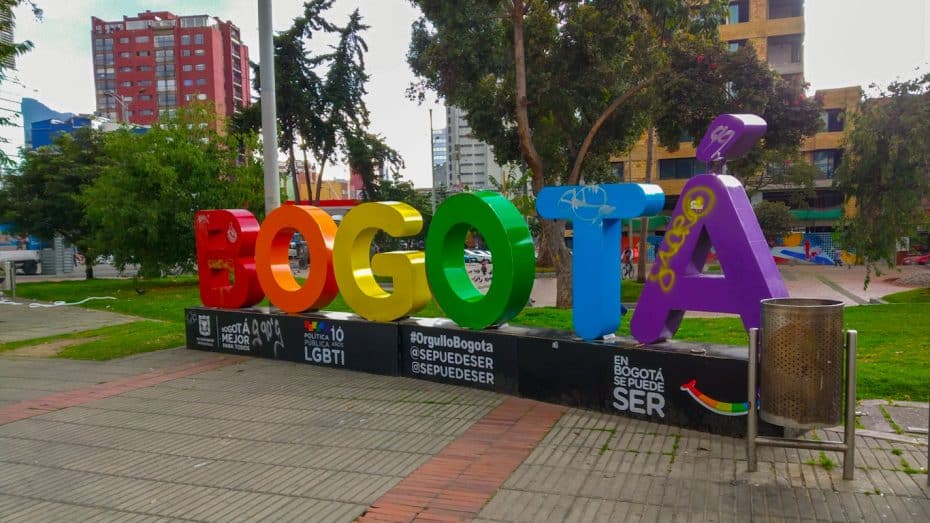
We can’t talk about gay Bogotá without discussing Theatrón. Like a crossbreed between a mall and Studio 54, this massive club is a labyrinth of smaller clubs spread across many rooms and levels. Feeling like indulging in steamy perreo? Head to the reggaeton and mainstream dancefloor, where the beats are infectious, and the crowd’s energy is palpable. Want to honor your pop divas? Go to the pop room and belch out Cher or Lady Gaga at the top of your lungs. If you’re moody or want a change of pace, the Rancheras Cantina provides a more intimate setting with traditional ballads to brood over a whiskey neat.
But there are several other popular LGBTQ+ venues in Chapinero besides Teatrón. Donde Aquellos Bar is known for its welcoming atmosphere and vibrant drag shows. Cueva Del Oso Leos Bear Bar is a favorite for its welcoming atmosphere and lively crowds. Fuzion Bar Club showcases live performances and DJs. La Chusma Bar is known for its relaxed atmosphere and drag shows. Anónimos Bar offers three dancefloors and themed nights.
Further north in the Zona Rosa, Vintrash Bogotá offers a hip and lively environment with eclectic decor and regular events. Queer-friendly Mad Radio Bogotá stands out for its inclusive vibe and excellent music selection, making it a favored spot among revelers. Meanwhile, El Recreo de Adán attracts those looking for a laid-back experience, with games and activities complementing the bar’s friendly service.
Is Chapinero Safe for LGBTQ+ Travelers?
Colombia has made significant strides in advancing LGBTQ+ rights in recent years. Same-sex sexual activity was decriminalized in 1980, and since then, the country has enacted various progressive laws that foster inclusivity and protect the rights of the LGBTQ+ community. These include legalizing same-sex marriage in 2016, the recognition of gender identity without surgery, and solid anti-discrimination laws based on sexual preferences and gender expression.
Regarding the safety of LGBTQ foreign travelers, Colombia is generally considered safer than many other Latin American countries. Bogotá, as a cosmopolitan city, is open-minded and progressive; however, LGBTQ foreign travelers should exercise caution like any other visitor to avoid potential threats associated with theft and street crime. In Chapinero specifically, the district has developed into a well-known haven for the LGBTQ+ community where acceptance levels are higher than in other locations. Despite this relative safety, travelers should still stay vigilant and employ common-sense precautions while enjoying their visit to Chapinero
Chapinero is Bogota’s Main Shopping Destination
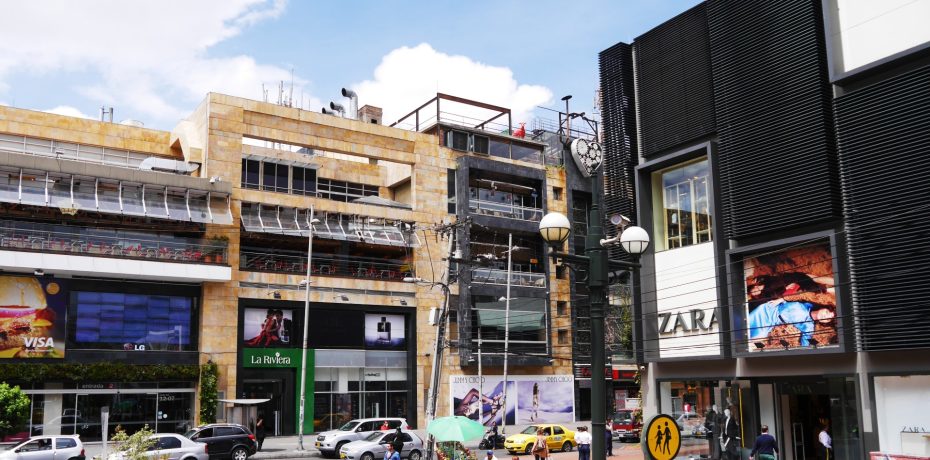
Chapinero is well-known for being the city’s main shopping destination. The especially popular Zona T offers a variety of top-notch retail options. Some of the prominent shopping centers in the area include the super upscale Centro Comercial Andino and El Retiro, as well as other more down-to-earth options like Atlantis Plaza and Centro Comercial Avenida Chile.
If American-style malls do not appeal to you, consider exploring the bustling streets of Zona T for your shopping needs. Here, you can find various name-brand stores outside shopping centers and malls. Key shopping streets and notable brands include Calle 82, home to top brands like Zara, Adidas, and Mango; Carrera 11, where you can explore H&M; Calle 85, home to Nike and Massimo Dutti; and Calle 81, featuring Pull&Bear and Bershka.
And yes, we do realize that most of the options mentioned above are international brands that you could find literally everywhere. And that’s because, while it’s popular among tourists, La Zona T is first and foremost there for the local upper classes to shop. For a more typical Colombian shopping experience, head down to Avenida Caracas or Calle 7 in the Central Chapinero or the Marly areas (on the district’s southern edge).
In case you missed it…
Chapinero is Arguably The Most British-Looking Neighborhood You’ll Find in South America
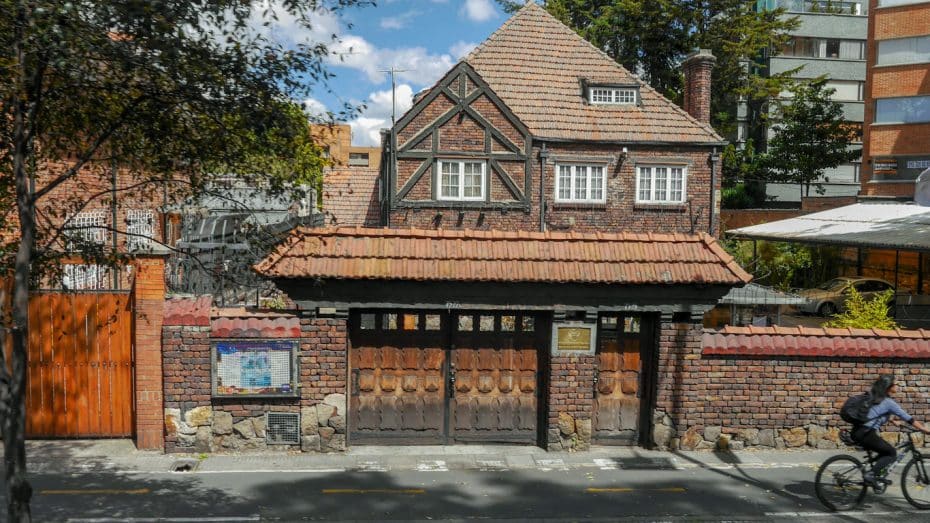
This is a super unexpected fact about the Colombian capital. Some central neighborhoods in the Comunas of Chapinero and Teusaquillo look like they’ve been pulled straight from a BBC show set in the Andean equivalent of Camden Town.
We’re not talking about an isolated eclectic residence here and there or a maybe-too-realistic-looking Irish pub that looks out of place. We’re talking massive urban developments of mock British quaint cottages and houses.
While many have been lost to time and “progress,” you can still find your share of low-rise (mock) Tudor, Edwardian, Georgian, and Victorian homes scattered around Chapinero. But why?
Since the first Conquistadors set foot in these parts of South America in the early XVI century, all through the colonial era, and culminating in Colombia’s (or rather Nueva Granada‘s) independence, Bogotá was under constant Spanish control, so finding so many examples of architecture that screams Cambridge rather than Cádiz makes little sense, right?
Well, yes and no. After Colombia’s independence, a new movement called Republican Architecture tried to break from the typical Spanish colonial styles to a distinctive, new aesthetic heavily influenced by neoclassical elements.
Founded in 1538, La Candelaria, Bogotá’s Old Town, has retained much of its colonial architecture. In contrast, Chapinero did not see significant urban development until the early 20th century, when an influx of migrants from rural areas led to the city’s expansion northward. This northern development aimed to accommodate the affluent segments of society. Coinciding with this growth was the advent of the Garden City movement in the UK and US, which greatly influenced urban planning in Chapinero. Designed to provide a tranquil residential area away from urban congestion, this concept promoted greenery, wide streets, and ample public spaces harmoniously integrated into the urban fabric.
Personal take: I am unsure if this was part of the plan. Still, I wholeheartedly believe that adopting architectural styles reminiscent of Britain (The Spanish Empire’s number one enemy) in the now-independent Colombian capital is a low-key F-U to Madrid (and I’m here for it!). Still, maybe I’m reading too much into it. Let me know in the comments.
Enter the stage Karl Brunner, an Austrian architect and urban planner who arrived in Bogotá in the 1920s. He was the mastermind behind this architectural transformation. Brunner’s vision for the city’s development included transforming its urban landscape to embrace modernity while preserving classic (north) European influences.
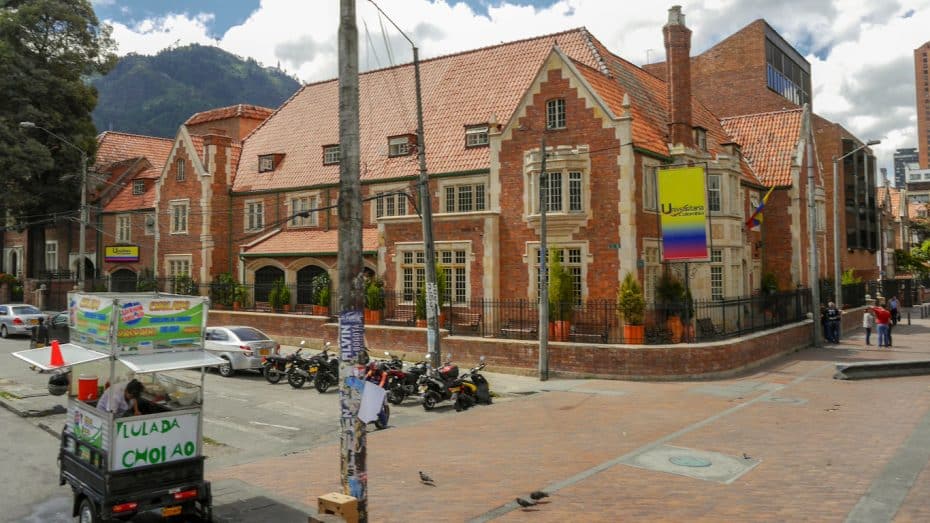
At the beginning of the 20th century, Bogotá was a city that was timidly advancing towards development […], it began to extend towards Chapinero and San Cristóbal, and neighborhoods such as Inglés, Centenario, Teusaquillo and Palermo appeared in the old haciendas.
Brunner was instrumental in laying out the plans and structure of many neighborhoods. His work is still evident today, as many buildings boast features such as gabled roofs, ornate wooden trimmings, and large bay windows made from local materials designed to mimic their European counterparts. Materials for these unique homes were carefully selected to emulate those used in traditional English manors, incorporating red brick facades, timber frames, and intricate ironwork.
Not only were these materials aesthetically pleasing, but they were also better suited for Bogotá’s cold climate than the colonial red-tyle roofs and adobe walls.
Yes, despite its location near the Equator, Bogotá is actually a cold city. In fact, when you consider its equatorial location, it’s a freezing city. The average yearly temperature in Bogota is 12°C (55°F).
Chapinero is One of the Best Areas to Stay in Bogotá
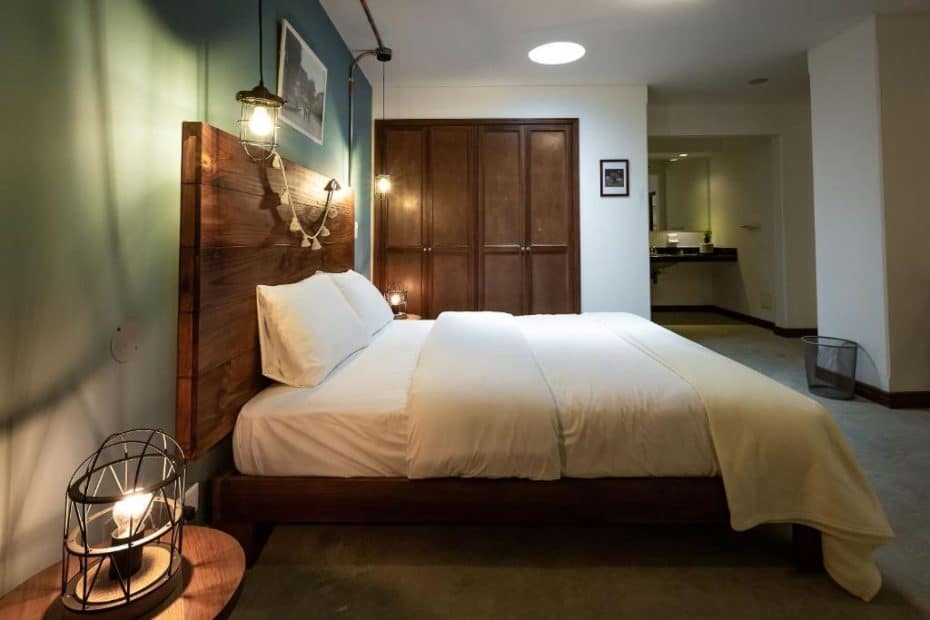
Due to its strategic location, Chapinero is considered one of the best areas to stay in Bogotá. Positioned in the central-north part of the city, it offers a sense of safety while remaining close to the central attractions. Bogotá is distinctly divided, with the north being more developed and secure than the south, making Chapinero an ideal balance. This area stands out for its vibrant nightlife, extensive shopping opportunities, and diverse food scene. Additionally, as mentioned above, Chapinero is recognized as a welcoming place for gay travelers.
This Comuna also boasts the widest selection of hotels in Bogotá, catering to all tastes and budgets. For those looking for a more luxurious stay, Zona Rosa in the northern section of Chapinero offers high-end options with proximity to upscale dining and nightlife.
Best Hotels in Zona Rosa
On the other hand, those traveling on a budget can find numerous affordable accommodations in Central Chapinero and around the Marly area, located at the southern edge. Marly is particularly popular among students due to its proximity to several universities, ensuring a range of cost-effective dining and lodging options.
Best Hotels in Central and South Chapinero
Things to See in Chapinero, Bogotá
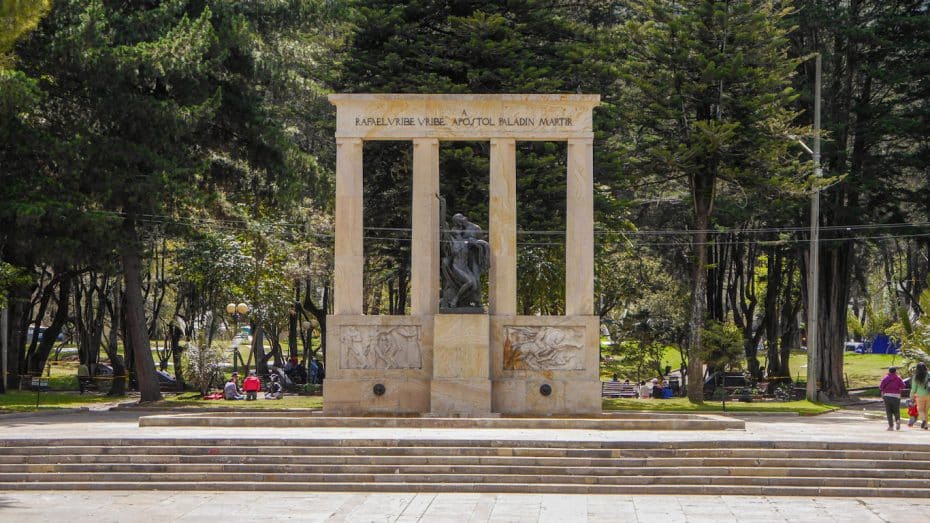
Chapinero may not have the historic appeal of La Candelaria, but it certainly offers several engaging sights. Wander through its vibrant neighborhoods, where contemporary street art adorns the walls. Stroll along avenues lined with eclectic boutiques, showcasing an impressive selection of fashion and crafts. The district also has green spaces perfect for relaxation and people-watching, and its culinary scene promises delightful surprises at every turn. Each corner of Chapinero tells a story, blending modernity with creativity.
- Quebrada La Vieja (Calle 71 # 2-80 Este): Nature enthusiasts will appreciate the hiking trails and scenic views this gorge provides, a cherished environmental reserve in Bogotá. It’s an excellent destination for morning hikes and offers an escape from the urban hustle.
- Our Lady of Lourdes Church (Carrera 13 # 63-27): Constructed in the early 20th century, this neo-Gothic church is a sight to behold with its stunning architecture and stained glass windows. It’s a central landmark in Chapinero and a hub for local parishioners.
- Parque Nacional Enrique Olaya Herrera (Cl. 35 #3-50, Bogotá, Colombia): Although technically on the border, this park features diverse plant species native to Colombia, educational exhibits, and themed gardens.
- Galería Casa Cuadrada (Carrera 7 #83-22): This art gallery features contemporary works from Colombian and international artists. Regular exhibitions make it a dynamic stop for art lovers. Visit website.
- Casa del Teatro Nacional (Diagonal 70A #7-85): A staple of Bogotá’s theater scene since its opening in the late 20th century, it boasts numerous theatrical productions throughout the year ranging from avant-garde pieces to classical performances. Visit website.
- Parque de Los Hippies (Cra. 8 #60-97): Known for its historical significance to the counterculture movement of the 1960s and ’70s, this peaceful park is now a place where locals gather to enjoy outdoor activities.
- Parque de la 93 (Carrera 13A #93A-46) is a vibrant urban park known for its beautifully landscaped grounds and frequent cultural events. Established as a social and recreational hub, this park is a favorite spot for leisure and outdoor activities.
- Museo del Chicó (Carrera 7 #93-01) is located in a colonial-style house built in the early 18th century. The museum showcases artifacts from pre-Columbian times to the present. Visit website.
- Parque Zonal Gustavo Uribe Botero (Calle 63 #45-10) is a green oasis amid the bustling city. Opened in the mid-20th century, it features sports facilities, playgrounds, and charming picnic spots, making it ideal for family outings.
- Teatro Astor Plaza (Avenida Carrera 15 #66-48) is a theater that has been hosting live performances since its inauguration in the 1970s. Known for its eclectic programming, it features theatrical productions and concerts from renowned local and international artists. Visit website.
- Virrey Park (Carrera 15 #87) spans both Chapinero and Usaquén, offering well-maintained paths perfect for jogging and biking. This park connects several neighborhoods while providing ample space for relaxation and exercise.
- Museo Javeriano De Historia Natural (Carrera 7 #40-62) forms part of Pontificia Universidad Javeriana and offers extensive collections specializing in Colombian flora and fauna. Established in the early 20th century, it serves as both an educational resource and a research facility. Visit website.
- Royal Center (Carrera 13 #66-80) is a notable venue dating back to the mid-20th century that hosts a variety of events, including conventions, exhibitions, and live performances. It’s well-regarded for its modern amenities and versatile spaces. Visit website.
Top Places for Partying in Chapinero, Bogotá
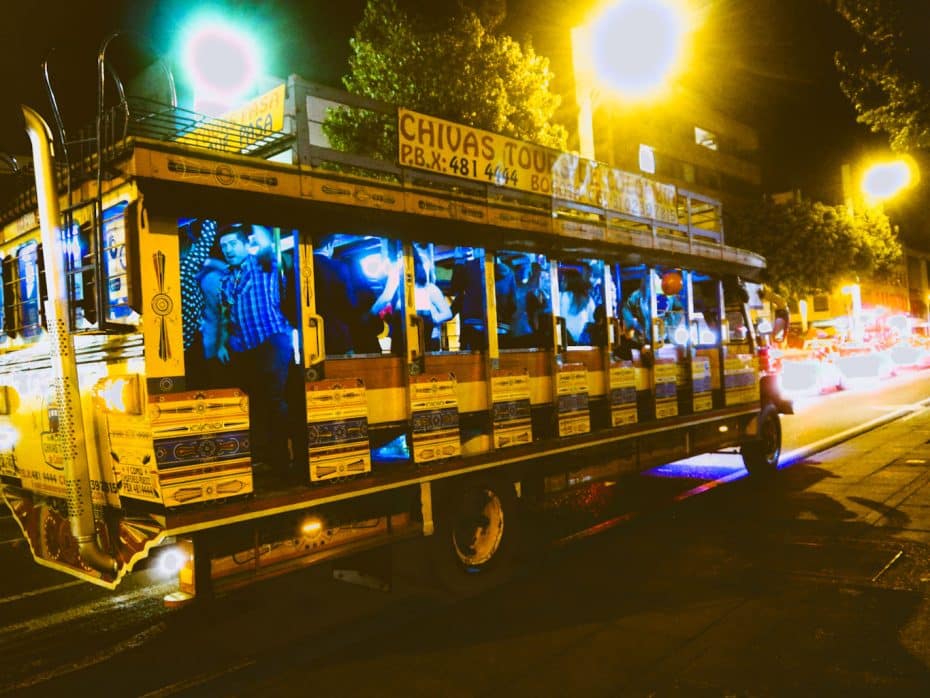
Here is a dose of tough love for straight people wishing to party in Bogotá: No place, gay or straight or in-between, on the face of the earth, is a better choice for a night of debauchery in Boogtá than the aforementioned Theatrón. In spite of that, Let’s give the straights a list of other Chapinero bars and clubs. If you go anywhere on this list, just keep the folks at Theatron in your heart, as they will be happier than you. It’s like a reverse: “prayers and thoughts.”
These are some straight-friendly options for those interested in Chapinero’s hetero-ish nightlife:
NightClubs
- Clandestino Club is a hotspot for those looking to experience Bogotá’s underground electronic music scene. The club boasts a minimalist, industrial design and is known for hosting both local and international DJs. The intimate setting and high-energy vibe make it a go-to place for electronic music lovers. Clandestino Club on TripAdvisor (Calle 64 #13-09)
- Presea offers a unique blend of reggaeton and Latin pop music, creating a lively and energetic atmosphere. The club’s modern design, vibrant lighting, and spacious dance floors make it a perfect spot for dancing the night away. It’s particularly popular among the younger crowd looking for a fun night out. Presea on TripAdvisor (Calle 85 #12-26)
- Gringo Tuesdays Bogotá Gringo Tuesdays is a popular weekly event that takes place in various bars and clubs across Chapinero. It’s known for its
tonguelanguage exchange sessions followed by a night of dancing to a mix of international and Latin music. The friendly and inclusive atmosphere makes it a great place to meet new people and dance the night away. Gringo Tuesdays on TripAdvisor (Calle 64 #13-09) - Octava Club Octava Club is a well-known hetero-friendly Chapinero venue offering electronic and house music. The club features a modern design with high-quality sound systems and lighting. It attracts a diverse crowd of partygoers Octava Club on TripAdvisor (Calle 82 #12-21)
Bars
- Huerta Coctelería Artesanal Huerta Coctelería Artesanal is a chic bar known for handcrafted cocktails made from fresh, locally sourced ingredients. The bar’s rustic yet elegant decor and cozy ambiance make it a perfect spot for a relaxed evening. The extensive cocktail menu offers something for every palate. Huerta Coctelería Artesanal on TripAdvisor (Calle 70A #10A-18)
- Bruno Bruno is a trendy bar with a sophisticated yet relaxed atmosphere. It features a wide range of cocktails, craft beers, and fine wines. The sleek, modern decor and ambient lighting make it ideal for enjoying drinks with friends or a date. The bar also hosts live music and DJ sets, adding to the vibrant nightlife experience. Bruno on TripAdvisor (Calle 85 #12-26)
- BBC Bodega Calle 67 BBC Bodega Calle 67 is part of the Bogotá Beer Company, offering a wide selection of locally brewed craft beers. The bar has a laid-back and casual vibe, making it a great place to relax and enjoy a cold beer. The industrial-chic decor and friendly atmosphere make it a popular spot among locals and tourists. BBC Bodega Calle 67 on TripAdvisor (Calle 67 #7-37)
- Indigo Club 51 Indigo Club 51 is a lively bar known for its energetic atmosphere and eclectic music selection, ranging from Latin hits to international chart-toppers. The vibrant decor and friendly staff make it a perfect place for socializing and dancing. The bar often features live performances and DJ sets, ensuring a fun and memorable night out. Indigo Club 51 on TripAdvisor (Calle 51 #9-45)
These clubs and bars showcase Chapinero’s diverse and vibrant nightlife, offering something for every taste and preference.
In case you missed it…
Personal Safety Tips for Visitors to Chapinero
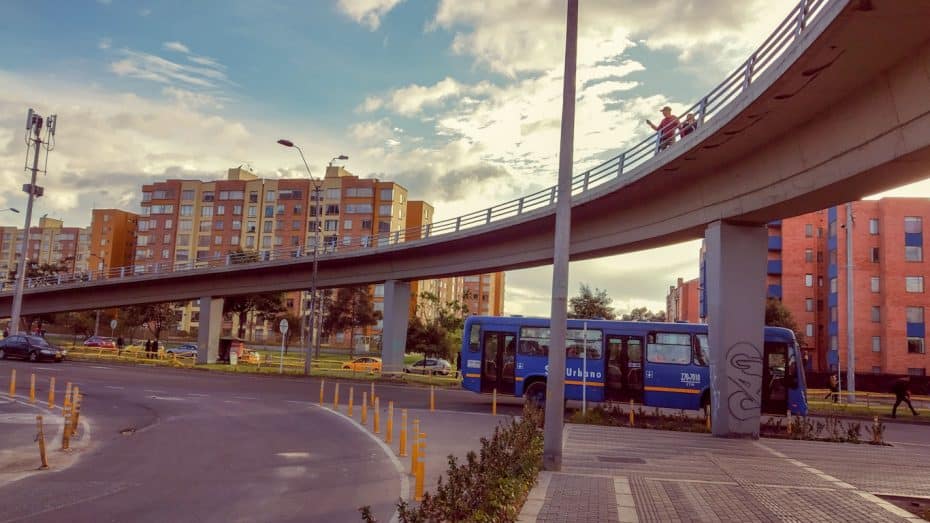
Chapinero is recognized as safe, but as with any area, it’s wise to take precautions to ensure your personal safety. Here are some tips for visitors:
- Stick to the Safest Areas: Although Chapinero is generally safe, there are particular areas known for their safety, such as Zona G (Gourmet Zone) and Quinta Camacho. These locations have frequent police patrols and a higher density of restaurants and cafes, making them safer for visitors.
- How to Keep Yourself Safe: Always be aware of your surroundings. Avoid looking at your phone while walking and appearing lost or distracted. Trust your instincts—remove yourself from the situation if something feels off.
- Licensed Taxis: Most clubs and bars in Chapinero will call a licensed taxi for you after a night out. This ensures that you have a safe ride back to your accommodation.
- Acceptable Identification Methods: Many places in Chapinero require ID for entry but often accept a copy or photo of your identification. This way, you can avoid carrying your ID and possibly losing it.
- Limit Cash on Hand: Carry limited amounts of cash to mitigate risk if you are targeted by petty crime. Credit cards or digital payments are widely accepted. Hide a few notes in your socks/bra for an emergency.
- Transactional Awareness: After each transaction, whether at an ATM or with a card, check your bank app to ensure the charges are accurate and no unauthorized withdrawals have taken place.
- Licensed Taxi Card: Always keep a licensed taxi company card with you in case your phone dies, or you can’t book a ride through apps.
- Avoid Dark Places Late at Night: Do not venture into poorly lit or desolate areas after dark. Stick to well-lit streets and areas with more foot traffic.
- It’s always better if you have some company, but if you’re alone, fake it until you make it: Act as though you’re meeting someone or talking on your phone if you feel uneasy when alone.
- Females traveling alone should be extra careful: Always inform someone of your whereabouts and schedule periodic check-ins with friends or family.
- Finally, LGBTQ individuals should remain cautious, as petty crimes do occur despite the rarity of hate crimes.
- Police Assistance: The police are your friends (almost always). If you find yourself in trouble, approaching local authorities should be considered a viable option for assistance.
Extra Useful Information to Keep Safe in Chapinero, Camden Town, Caracas, or the Upper East Side
Aren’t you happy we kept all the party-pooping parts of the article until the end?
- Always carry a copy of your passport and identification.
- Keep a small amount of cash for emergencies (in a nonvisible/obvious place).
- Have a fully charged mobile phone with local emergency numbers saved:
- Police: 123
- Colombian Tourist Police (more likely to speak English): (1) 3374413
- Medical emergencies: 132
- Fire department: 119
- Use apps like Google Maps for navigation to avoid getting lost.
- Share your location with someone while traveling through an app (it doesn’t have your significant other or mother; a friend would do)
- Carry a portable charger for your electronic devices.
- Avoid walking alone at night; opt for taxis or ride-sharing services.
- Stay aware of your surroundings and avoid displaying valuables in public.
- Use an RFID-blocking wallet to protect your credit cards.
- Familiarize yourself with local laws and customs (especially substances) to stay out of trouble.
In case you missed it…



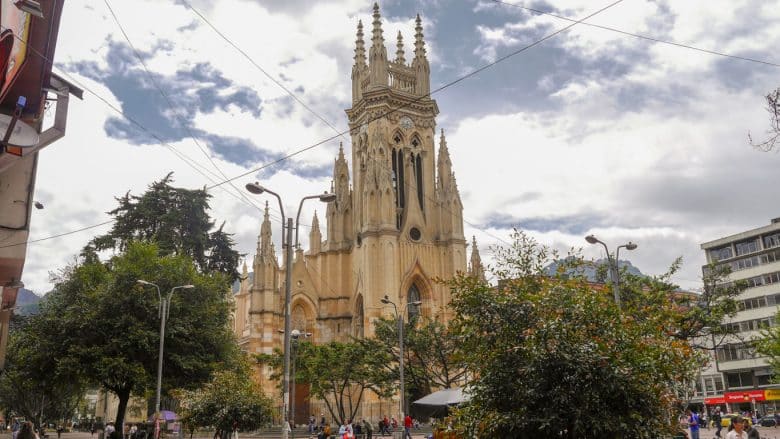

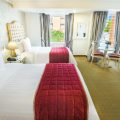


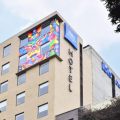
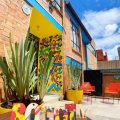

















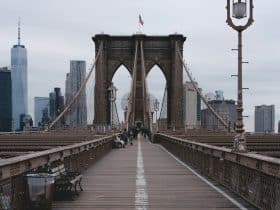
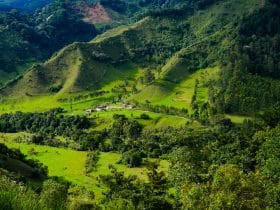

Leave a Reply
View Comments